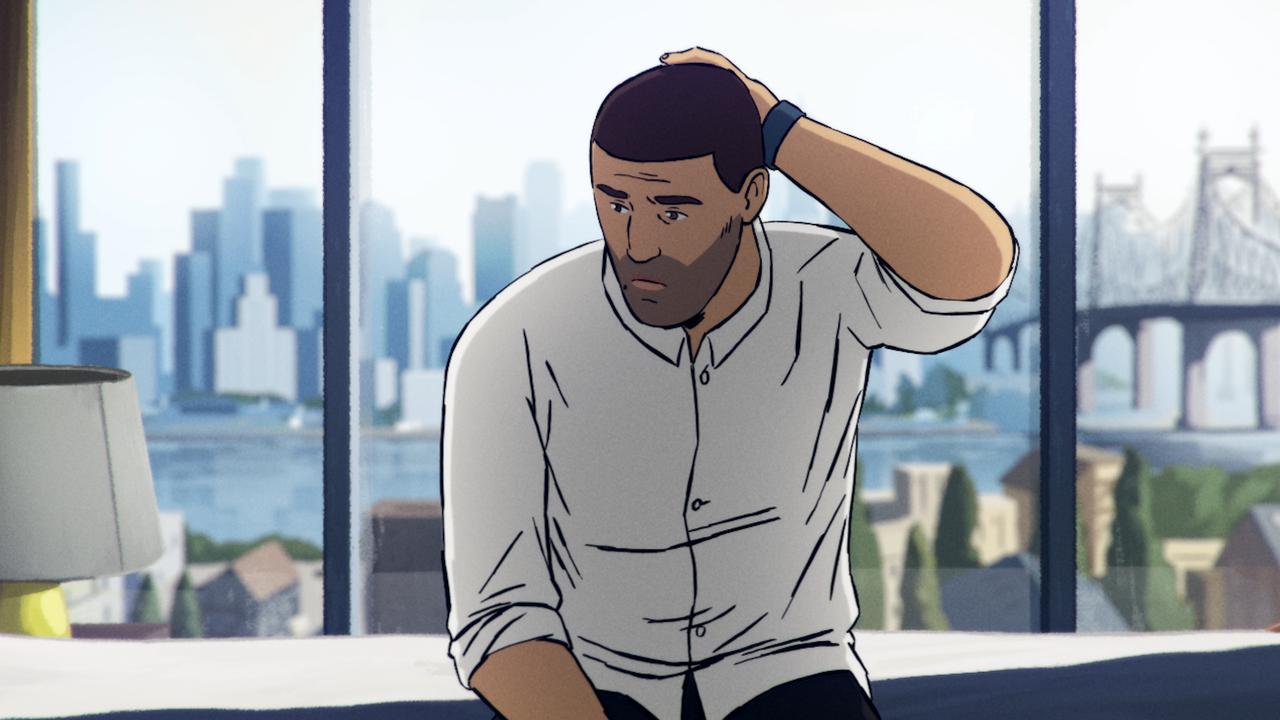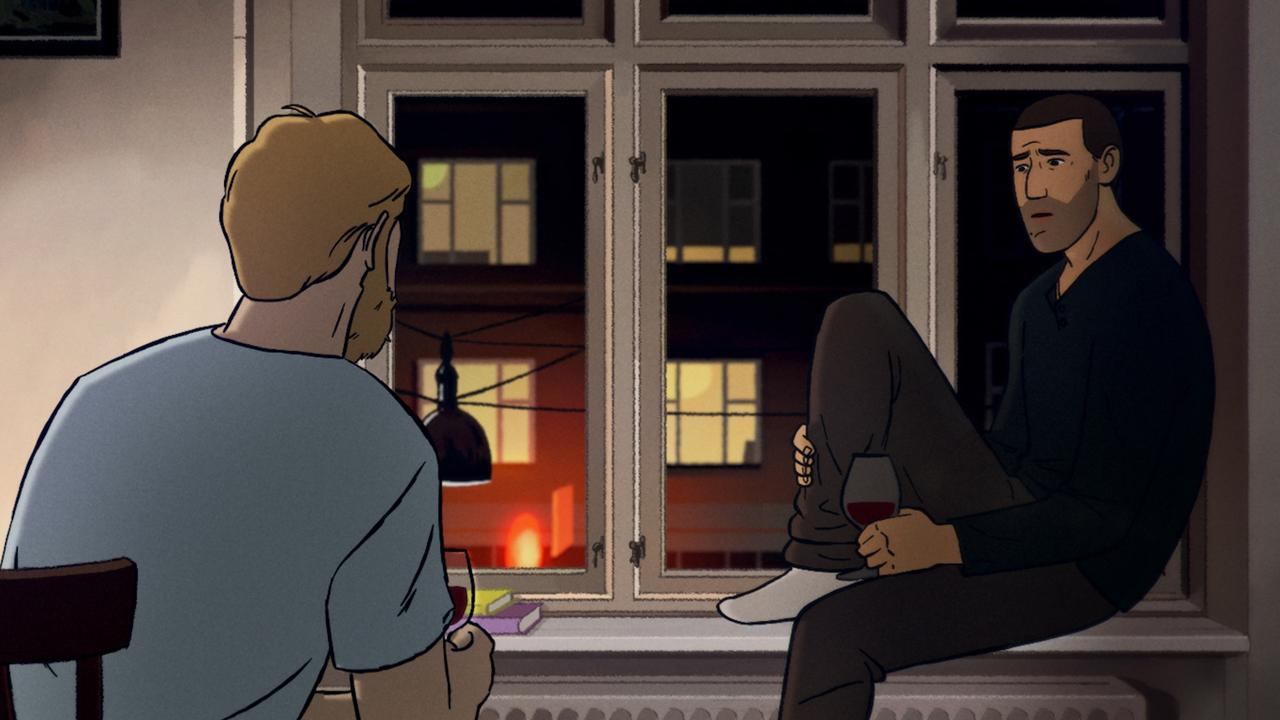Flee movie: Triple Oscar-nominated animated documentary is an emotional one-two punch
Flee is an emotionally effective coming-of-age documentary. No wonder it’s been nominated for three Oscars.

For the first time in Oscars history, Danish film Flee has been nominated in three seemingly unconnected categories – Best International Feature, Best Documentary Feature and Best Animated Feature.
Those three honours speak to Jonas Poher Rasmussen’s work as something that doesn’t fit the mould, and it’s one of the many aspects that make Flee such a compelling proposition.
The documentary tells the story of Amin Nawabi, a Danish man who as a child fled Afghanistan when the Soviets withdrew their forces, leading to civil war.
Years before his mother, two sisters and an older brother escaped their homeland, their father had been captured and disappeared, which already put a target on the family’s door. It was perilous.
Hiding out in Russia with an expired tourist visa and among throngs of corrupt and violent cops, Amin’s family has little choice but to watch Mexican telenovelas and wait for the oldest brother to earn enough money in Sweden to pay traffickers.

It’s a harrowing, detailed recollection of heartbreak, hardship and the endurance of the human spirit for a better life – and of what you’re willing to sacrifice for your family.
There is a great compassion that courses through the film which puts an individual face on the suffering that befalls throngs of refugees worldwide.
At the same time, Amin is awakening to his sexuality and grappling with what it means to be homosexual when, he tells us, there isn’t even a word for it in Afghanistan.
The threading of Amin’s coming-of-age story with the moving tale of his family’s toils is an effective emotional one-two punch, and it’s all the more distinct because of its form.
Rasmussen’s use of animation for a documentary adds a dimension to Amin’s personal story, including the ability to recreate scenes from Amin’s memories that could not possibly have been filmed at the time.

Seeing those scenarios rendered with dynamism and life makes it vivid and urgent, even for events that occurred decades earlier.
And there are several animation techniques on show here, including the animation of documentary interviews that look almost like rotoscoping, overlaid with the real Amin’s voice.
Flee isn’t the first to use animation as a way into a story that some international audiences may not find accessible or dismiss as tragedy porn.
Israeli filmmaker Ari Folman did something similar with war documentary Waltz With Bashir while French-Iranian filmmaker and graphic novelist Marjane Satrapi adapted her graphic novel memoir, Persepolis, into a biographical drama.
Flee is a clever, flexible and creative approach to telling a personal, emotional story about discovery and survival through the voice of someone who has lived the kind of life most couldn’t even fathom.
Rating: 4/5
Flee is in cinemas now




